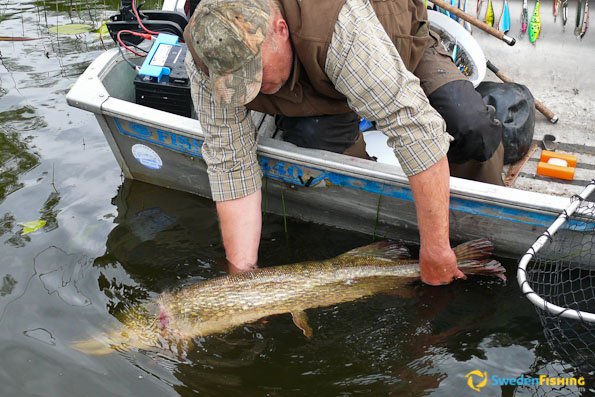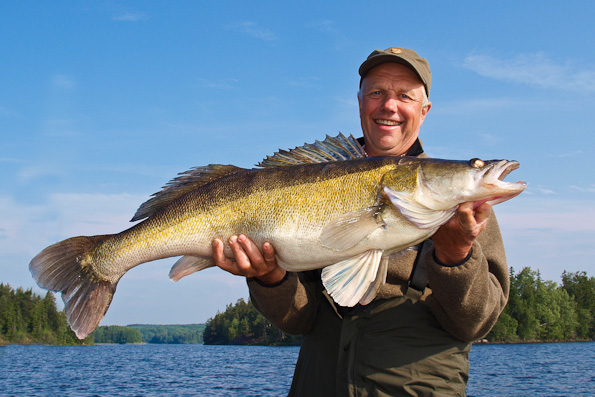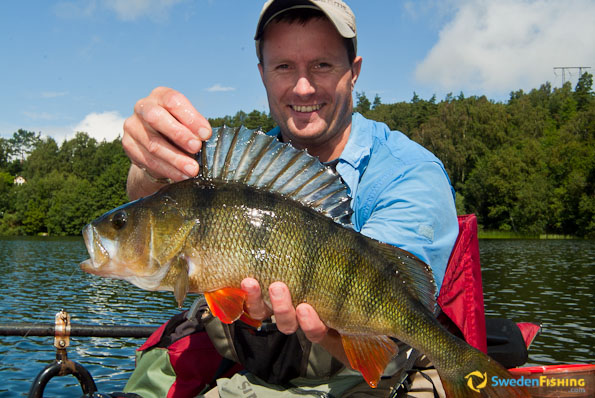Fishing rules
Since fishing is not part of the Right of Public Access, you‘ll need a fishing permit on most waters. POACHING IS SEVERELY PUNISHED. Always check if there are special, local rules such as minimum size, catch limits and the use of private waters, as well as off-limits areas like in the mouths of some rivers. Some sites are seasonal and some types of fishing may not be allowed in all or part of the fishery at certain times of year. Information can be found where you buy your permit. You’ll need permits or special permission to fish anywhere in Sweden except in the five largest lakes – Vänern, Vättern, Hjälmaren, Mälaren and Storsjön. Sea fishing along the whole coastline is also free.
New rules for pike in the Baltic Sea!
The Swedish National Board of Fisheries has issued new regulations in the Baltic Sea for pike. You’re only allowed to keep 3 pikes between 40 - 75 cm per angler per day. Pike below or above this length span must be released back into the water at once.

South Sweden - Nice pike released in Sjuhärad Fishing Area.
Fishing is regulated by the Fisheries Act, the Fisheries Ordinance, and FIFS, a compendium of regulations issued by the Swedish National Board of Fisheries. These statutes contain rules on numerous matters, including gear for recreational fishing. Fishing is prohibited within 100 meters of stationary fishing gear, including fish farms. Fishing with nets, trolling (with or without motor), tip-up fishing and the like are not permitted without a license. The basic rules of the Right of Public Access always apply: show consideration, don’t disturb, and don’t destroy.

South Sweden - 10,7 kg pikeperch from Brovillan / Sommenbygd.
And don’t be greedy!
Swedish waters are plentiful. Still, those of us who fish for enjoyment should take no more fish than we need for one day’s lunch and dinner. The rest should be released in what is sometimes referred to as “voluntary catch and release”. We prefer the term “ecological angling” – we want to make sure that our great grandchildren will be able to experience our fantastic fishing waters filled with a healthy stock of wild fish in an undisturbed environment!

Central Sweden - perch caught on jig in the Falun/Borlänge area.
How to release fish after they’re caught
- Use barbless, single hooks as much as possible or flatten the barb with a pair of pliers before fishing.
- Have long-nosed pliers at hand for easy hook removal.
- When playing a fish, bring it in as quickly as possible to avoid over-exhaustion, especially in warm waters and waters with low oxygen content. Do not use to light tackle on big fish.
- All fish have a protective slime layer on their skin and it is important that your HANDS ARE WET before handling them. When landing a fish, handle it as little as possible. For small fish, it is often possible to grasp and invert the hook to return the fish to the water without touching it.
- If you use a net, make sure it has a soft, knotless, cotton mesh net to minimize damage to the slime layer.
- Anglers will often want pictures of their trophy catch before releasing it. For large fish, grasp the tail and support the internal organs gently directly behind the pectoral fins. Keep the fish in the water and if possible avoid lifting it out.
- Some fish fight to the point of exhaustion and may need to be revived. To revive a fish, grasp it by the tail and support the internal organs gently directly behind the pectoral fins. Move the fish back and forth in the still water or point the fish upstream. Make sure the fish is revived and ready to go before releasing it.
![]()
![]() Advertisement
Advertisement
Click on map for destinations
![]() Search your fishing destination
Search your fishing destination


